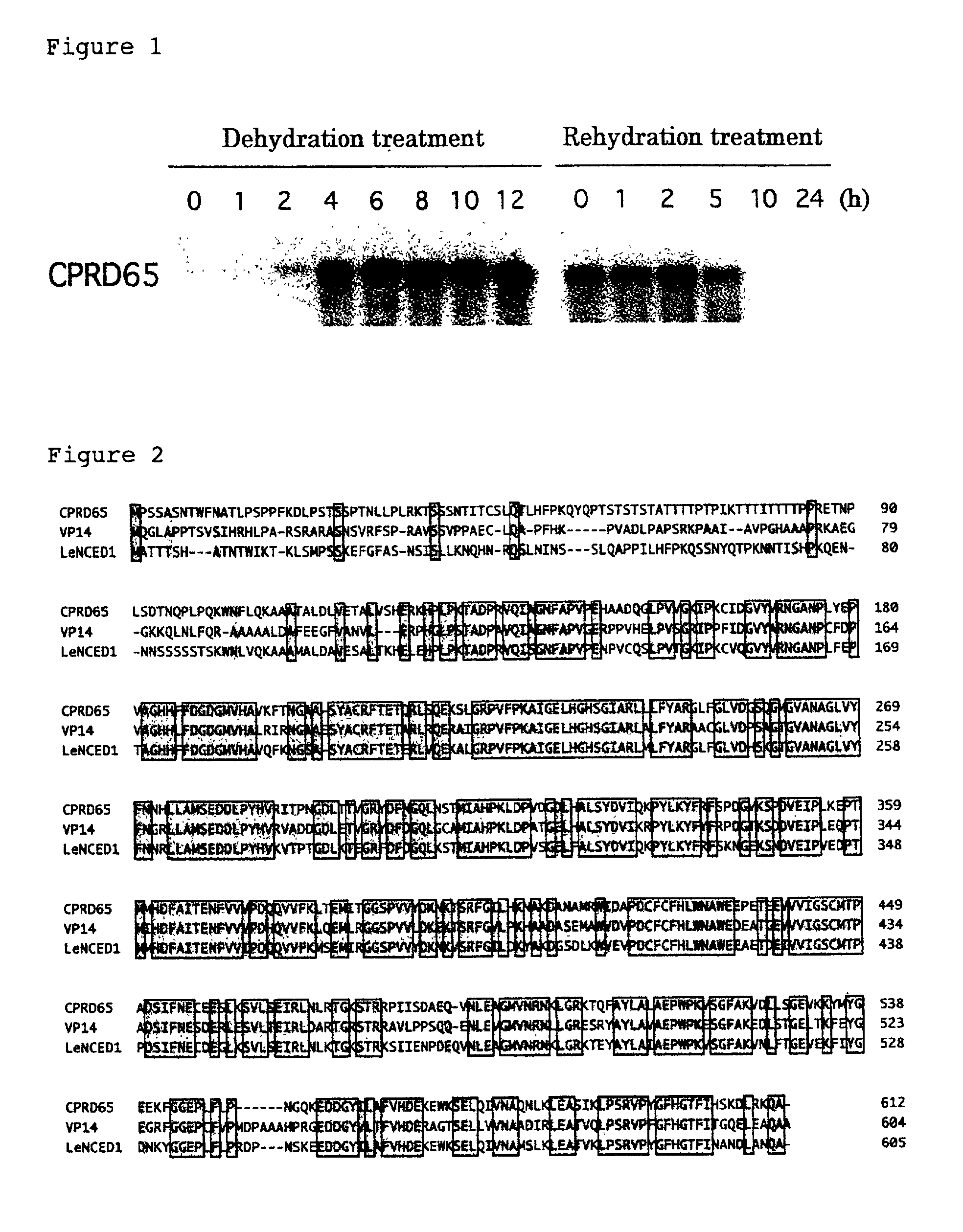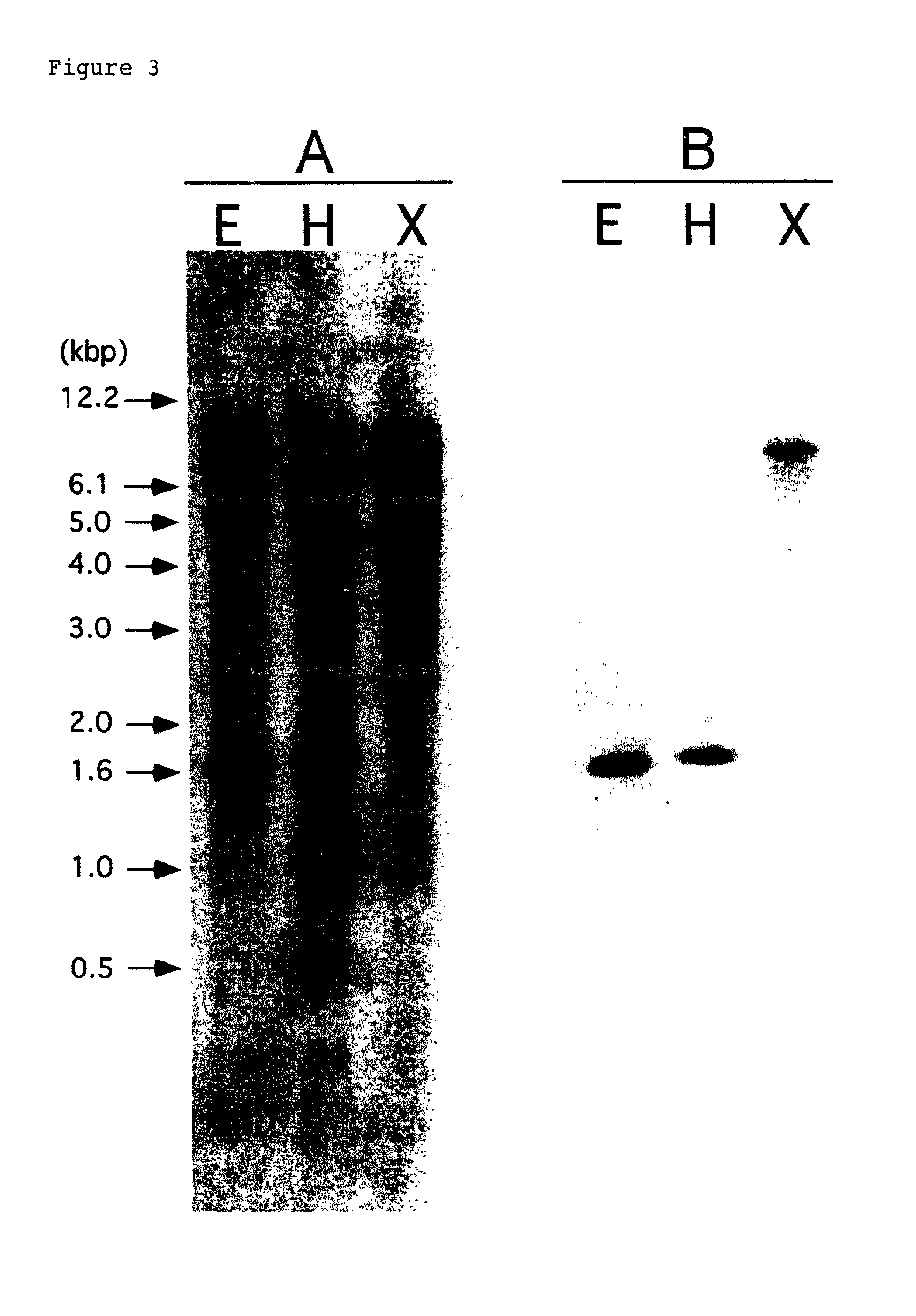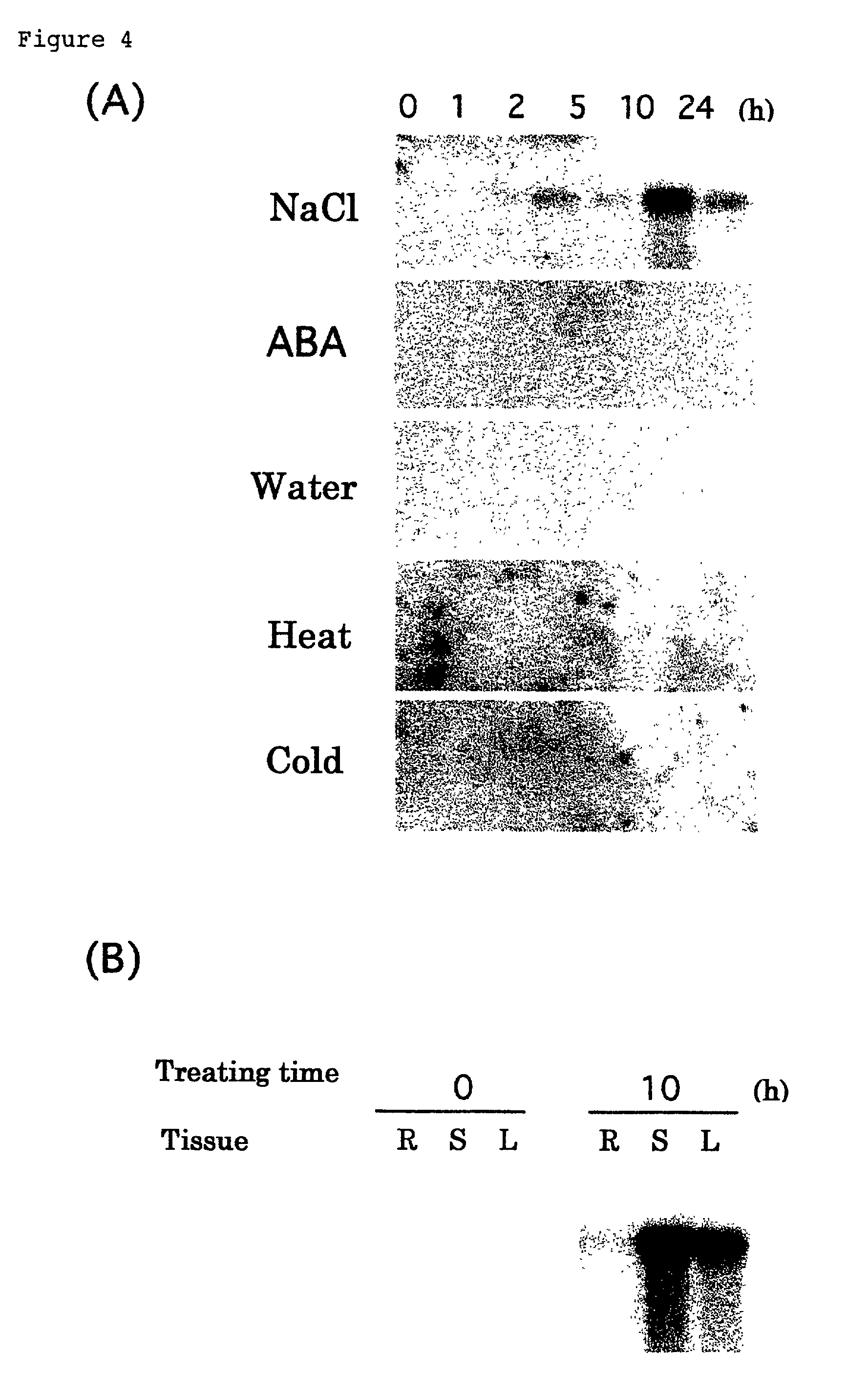Transgenic plants carrying neoxanthin cleavage enzyme gene
a technology of neoxanthin cleavage and transgenic plants, applied in the field of dna, can solve the problems of improving stress tolerance in plants and severely affecting plant growth, and achieve the effects of reducing stress tolerance, increasing stress tolerance, and significantly increasing stress tolerance in overexpressed plants
- Summary
- Abstract
- Description
- Claims
- Application Information
AI Technical Summary
Benefits of technology
Problems solved by technology
Method used
Image
Examples
example 1
Isolation of cDNA Clones Corresponding to Genes Induced by Dehydration
[0091]A cDNA library was constructed with poly(A)+ RNA that had been isolated from 8-day-old cowpea plants after dehydration stress for 10 hours as follows.
[0092]Whole plants were harvested, washed gently to remove soil from the roots and dehydrated on Whatman 3 MM filter paper at room temperature and approximately 60% humidity under dim light for 10 hours. Total RNA was prepared from the plants after dehydration treatment by the aforementioned method (Nagy, F. et al., “Analysis of gene expression in transgenic plants. ” In Gelvin and Schilperoort (eds), “Plant Molecular Biology Manual. B4.,” Kluwer Academic Publishers, Dordrecht, pp. 1–29, 1988). By following the reference (Sambrook, J. et al., “Molecular Cloning: A Laboratory Manual,” 2nd ed, Cold Spring Harbor Laboratory Press, Cold Spring Harbor, N.Y., 1989), total RNA was passed through an Oligo-dT cellulose column twice to prepare poly(A)+ RNA. About 2% of t...
example 2
Sequence Analysis of the CPRD65 cDNA
[0099]Since the CPRD65 cDNA fragment isolated in Example 1 was not possibly full length, the same cDNA library was screened again with a partial CPRD65 cDNA as a probe to isolate a full-length cDNA (SEQ ID NO: 11). An amino acid sequence encoded by the full-length cDNA clone (SEQ ID NO: 12) was shown in FIG. 2. The full-length CPRD65 cDNA consists of 2432 bp, including a 5′-flanking region of 125 bp and 3′-flanking region of 486 bp. One polyadenylation consensus sequence (AATAAA) was found in the 3′-flanking region. This sequence has an open reading frame encoding a polypeptide of 612 amino acids with a calculated molecular weight for the putative protein of 67.6 kDa. Comparison of the deduced amino acid sequence of the CPRD65 protein with the protein database revealed an extensive homology with VP14 from maize (Zea mays) (61%) (Schwartz, S. H., Science, 276: 1872–1874, 1997) and a neoxanthin cleavage enzyme from tomato (Lycopersicon esculentum) (...
example 3
Genomic Southern Blot Analysis of the CPRD65 Gene
[0100]In order to analyze genes related to the CPRD65 of cowpea plants, genomic Southern blot hybridization was conduced in the conditions of two stringencies (FIG. 3).
[0101]The genomic Southern blot analysis was conducted according to the method of the reference (Sambrook, J. et al., “Molecular Cloning: A Laboratory Manual,” 2nd ed, Cold Spring Harbor Laboratory Press, Cold Spring Harbor, N.Y., 1989). Genomic DNA of 10 μg was digested with restriction enzymes, separated in a 1% agarose gel, and blotted to a nylon filter. The filter was hybridized with [32P]-labeled fragments in 30% formamide, 6×SSC, 5× Denhardt's solution, and 100 μg / ml of denatured salmon sperm DNA at 42° C. The filter was washed twice with 0.1×SSC, 0.1% SDS at 60° C. for 15 min (B), or washed twice with 0.5×SSC, 0.5% SDS at 37° C. for 15 min (A), and subjected to autoradiography.
[0102]The CPRD65 cDNA had no internal restriction site for EcoRI and XbaI and had two f...
PUM
| Property | Measurement | Unit |
|---|---|---|
| temperature | aaaaa | aaaaa |
| temperature | aaaaa | aaaaa |
| temperature | aaaaa | aaaaa |
Abstract
Description
Claims
Application Information
 Login to View More
Login to View More - R&D
- Intellectual Property
- Life Sciences
- Materials
- Tech Scout
- Unparalleled Data Quality
- Higher Quality Content
- 60% Fewer Hallucinations
Browse by: Latest US Patents, China's latest patents, Technical Efficacy Thesaurus, Application Domain, Technology Topic, Popular Technical Reports.
© 2025 PatSnap. All rights reserved.Legal|Privacy policy|Modern Slavery Act Transparency Statement|Sitemap|About US| Contact US: help@patsnap.com



